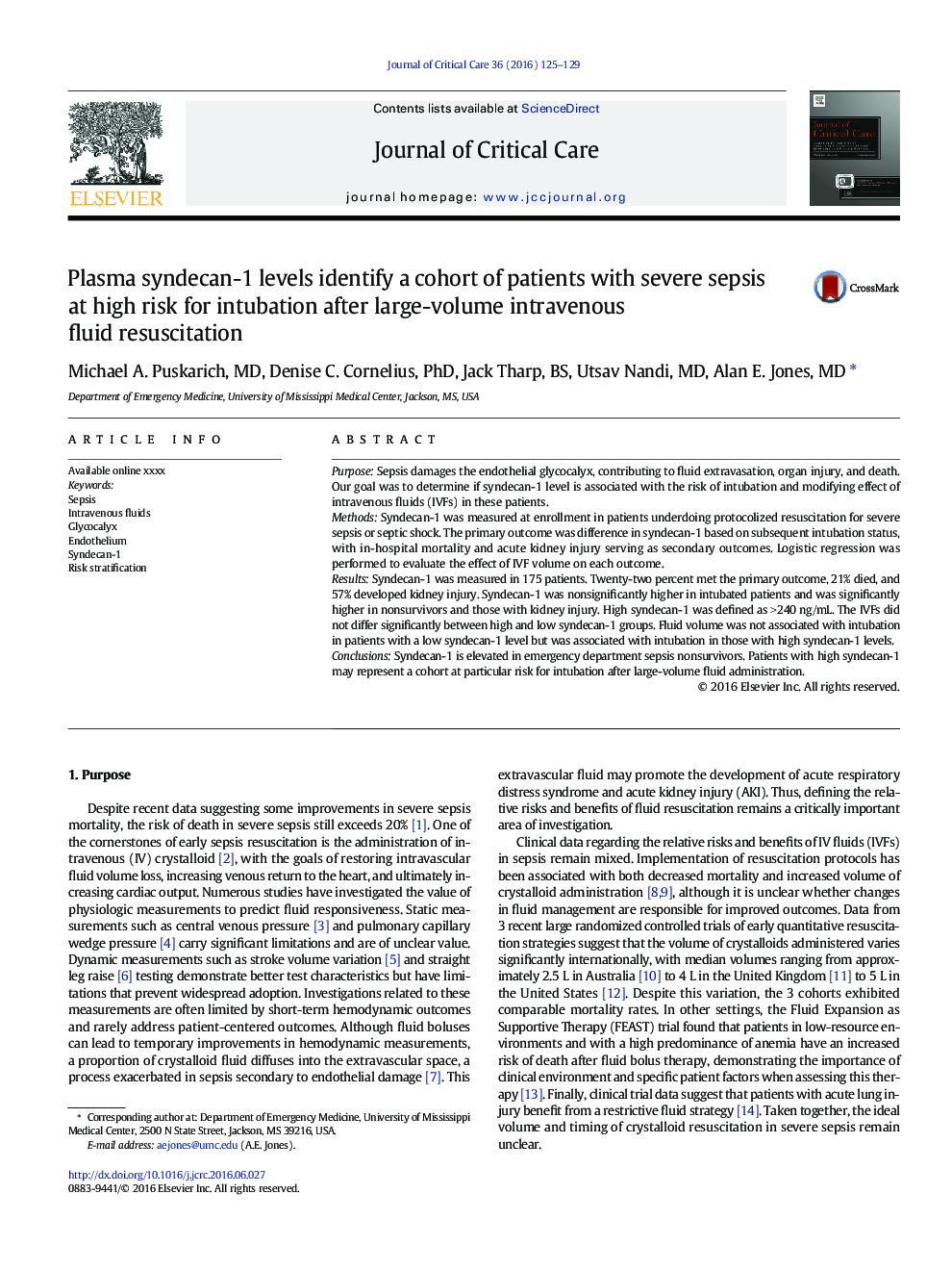| کد مقاله | کد نشریه | سال انتشار | مقاله انگلیسی | نسخه تمام متن |
|---|---|---|---|---|
| 2764365 | 1567676 | 2016 | 5 صفحه PDF | دانلود رایگان |
PurposeSepsis damages the endothelial glycocalyx, contributing to fluid extravasation, organ injury, and death. Our goal was to determine if syndecan-1 level is associated with the risk of intubation and modifying effect of intravenous fluids (IVFs) in these patients.MethodsSyndecan-1 was measured at enrollment in patients underdoing protocolized resuscitation for severe sepsis or septic shock. The primary outcome was difference in syndecan-1 based on subsequent intubation status, with in-hospital mortality and acute kidney injury serving as secondary outcomes. Logistic regression was performed to evaluate the effect of IVF volume on each outcome.ResultsSyndecan-1 was measured in 175 patients. Twenty-two percent met the primary outcome, 21% died, and 57% developed kidney injury. Syndecan-1 was nonsignificantly higher in intubated patients and was significantly higher in nonsurvivors and those with kidney injury. High syndecan-1 was defined as >240 ng/mL. The IVFs did not differ significantly between high and low syndecan-1 groups. Fluid volume was not associated with intubation in patients with a low syndecan-1 level but was associated with intubation in those with high syndecan-1 levels.ConclusionsSyndecan-1 is elevated in emergency department sepsis nonsurvivors. Patients with high syndecan-1 may represent a cohort at particular risk for intubation after large-volume fluid administration.
Journal: Journal of Critical Care - Volume 36, December 2016, Pages 125–129
